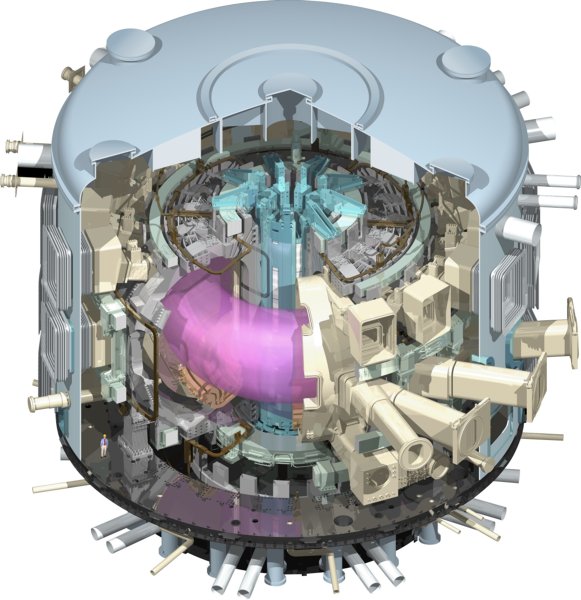In Provence in the South of France over 30 countries have combined to set up a research facility known as ITER. This international nuclear fusion project has the aim of producing a nuclear reactor capable of producing unlimited supplies of cheap, clean, safe and sustainable electricity so that all the Greens can continue to play with their laptops and charge up their mobile phones and various other gadjets. ITER hopes to save the world from climate change, according to the very Green organ known as 'The Independent' (independent of scepticism, flying in the face of reality), back in April of 2013. Some £13 billion pounds of taxpayer money has been chiselled into the project – but who is going to reap the benefits?
Tony Haynes, SIS member (see video of a talk he gave elsewhere on this web site) has been enthusiastically looking for update and news of what is happening behind the scenes as far as nuclear fusion and plasma based energy is concerned. There are lots of web sites out there in cyberspace with lots and lots of information – but as a developing science only so much is actually given away, and some false evidence may have been slipped into the cogs, designed to steer rivals away.
Surpringly, the roots of ITER go back to 1985 and Mikhail Gorbachev, the former leader of the Soviet Union. He used Russian knowledge of nuclear fusion as a bargaining chip in disarmament talks with the US. Gorbacheve and Reagan, the latter supported by Thatcher and Mitterand, signed an agreement to co-operate on nuclear fusion using the Russian 'tokamak' reactor, a revolutionary device that could hold, it is claimed, the superhot fusion fuel by creating a 'magnetic bottle' within the reactor's doughnut shaped vacuum vessel. ITER has come a long way since then. However, problems persist. This is illustrated in a post at http://phys.org/print306666129.html …where a research group at the University of Twente claims to have made a breakthrough by inventing a new more robust kind of superconducting cable which allows a strong magnetic field to be created which in turn is used to control the hot energy generating plasma in the reactor core. This, it is hoped, will create the foundation for nuclear fusion.

In the same piece we are told the ITER nuclear fusion reactor is under construction and will not be in operation until 2020 – or later. It then sets about describing the process of fusion, saying that an 'enormously' strong magnetic field of 13 teslas is required in order to control the incredibly hot plasma – and so on. Long way to go.
